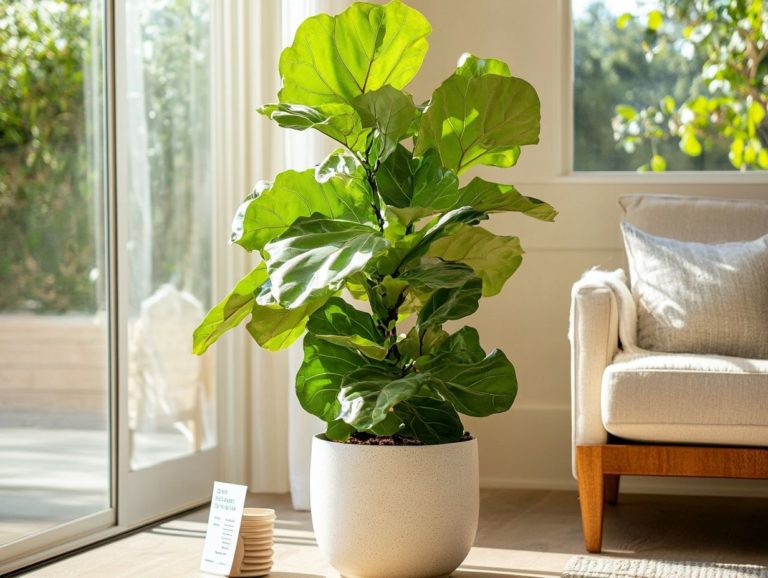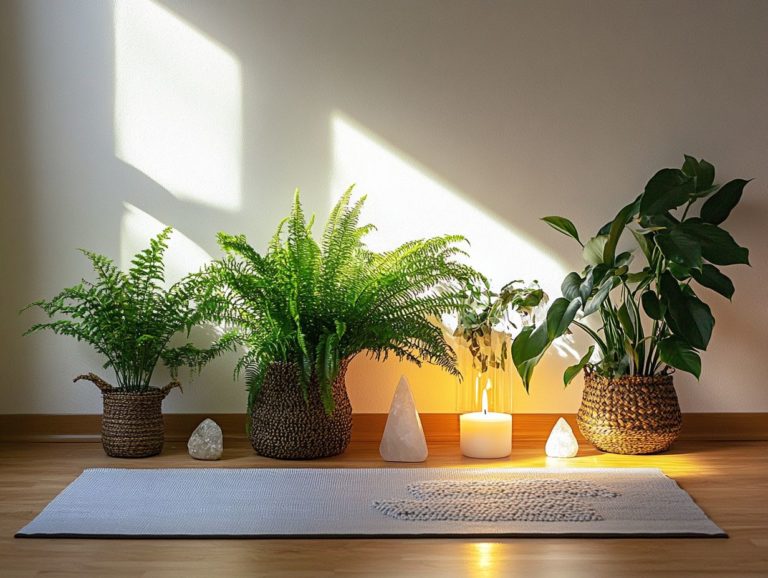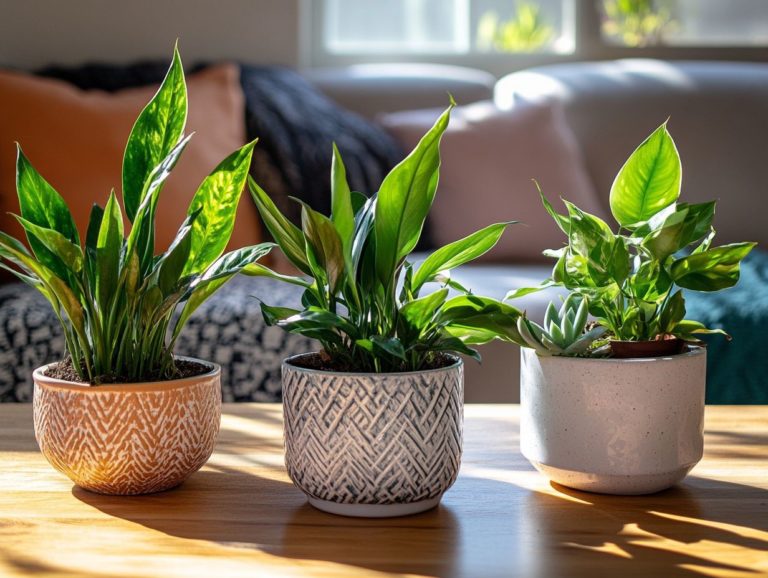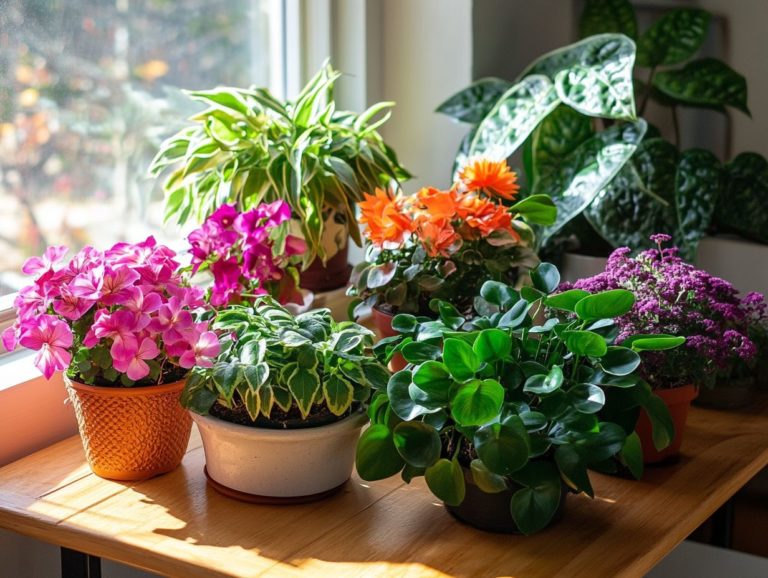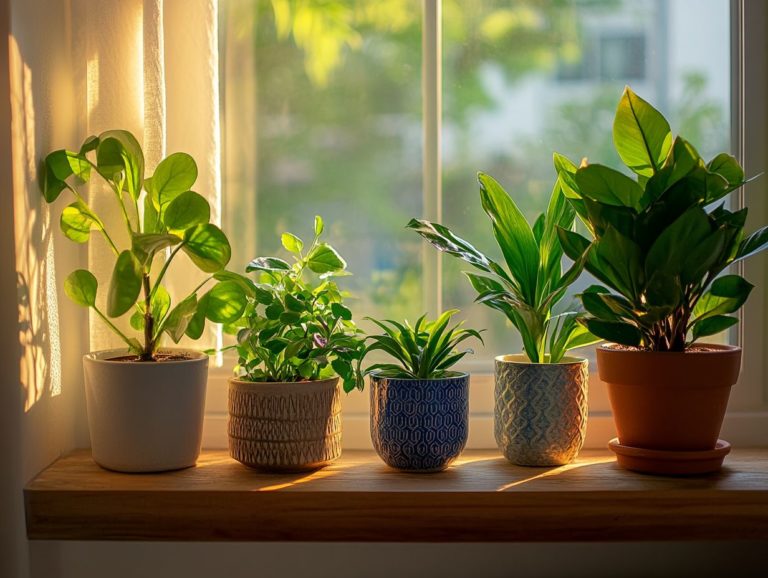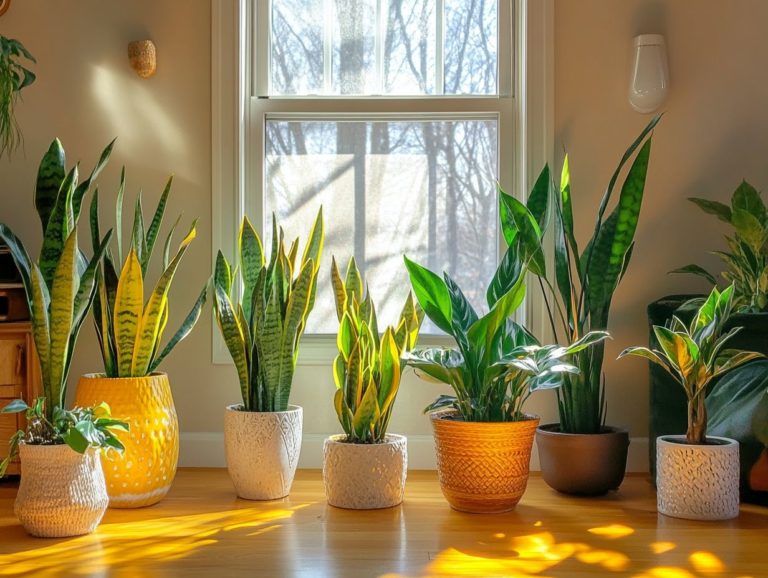Understanding the Pilea: Care and Growth
The Pilea, often lovingly referred to as the “Chinese Money Plant,” has enchanted plant enthusiasts around the globe with its distinctive charm and laid-back demeanor.
This guide covers the key elements of Pilea care. It includes lighting, watering, soil, and propagation. It will also address common challenges, offer maintenance insights, and present innovative ideas for showcasing your plant beautifully in your home.
Prepare to transform your Pilea into a thriving centerpiece that draws admiration and adds a touch of elegance to your space!
Contents
Key Takeaways:
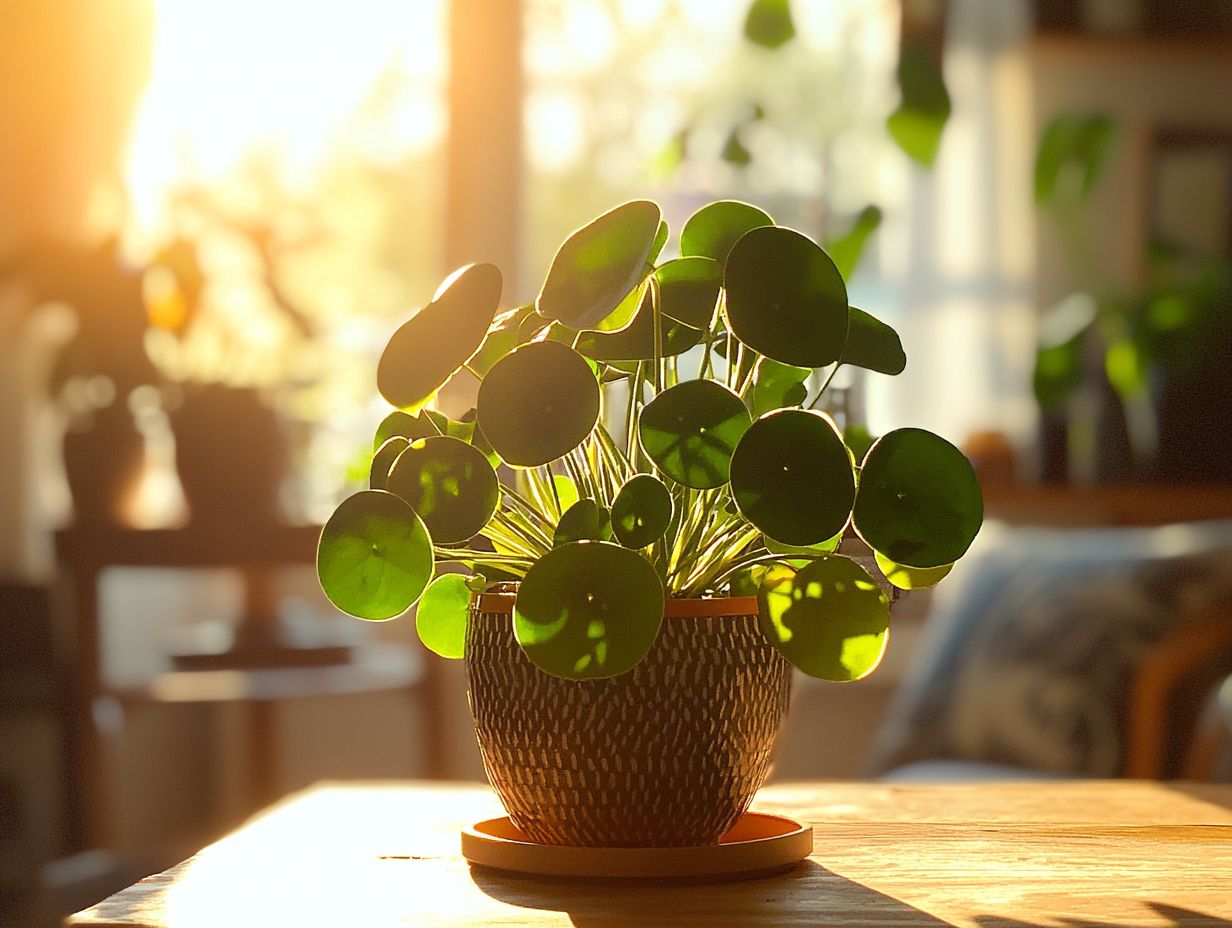
- Proper care and maintenance of Pilea is crucial for its growth and health. This includes providing adequate light and water, using suitable soil and fertilizer, and regular pruning and propagation.
- Know common issues and their solutions to keep your Pilea thriving. Address any problems promptly to encourage growth and health.
- Pilea plants can add a touch of green to your home and serve as a creative decor element. Get creative with different display ideas to showcase the unique beauty of your Pilea.
Overview and Background
The Pilea peperomioides, often referred to as the Chinese money plant, has its roots in southern China. It became a sensation among indoor gardening aficionados since its arrival in the UK in 2017. This low-maintenance houseplant is adored for its glossy green leaves and distinctive appearance, making it a staple for plant lovers and a chic complement to Scandinavian interiors.
Its popularity has grown rapidly, thanks in part to social media platforms like Instagram and its appearances in esteemed gardens such as Waddesdon Manor. The Chinese money plant has established itself as a must-have accessory for modern home decor.
This charming plant doesn’t just enchant with its visual appeal; it also symbolizes prosperity and good fortune. Especially during Lunar New Year celebrations, it s often gifted to loved ones.
As its appeal continues to grow, influential figures like the well-known influencer Crazy Plant Guy have amplified its visibility. They share personal stories and care tips that resonate deeply with their audiences. The journey of this botanical treasure embodies a cultural appreciation that transcends borders, nurturing a profound connection between individuals and their living spaces.
How to Care for Your Pilea
Caring for your Pilea peperomioides, known as the Chinese money plant, requires a clear understanding of what it needs particularly regarding watering, light exposure, and humidity levels.
Though this low-maintenance houseplant is quite adaptable, following tailored care instructions can significantly enhance its growth and overall health. This ensures that your plant thrives beautifully in a variety of home environments.
Light and Water Requirements
The Pilea peperomioides truly flourishes in bright, indirect light, which mirrors the conditions of its native habitat in southern China. However, if you water it improperly, you risk critical issues like root rot, which occurs when the roots decay due to excess water. Finding the right balance of soil moisture, which refers to how wet or dry the soil is, is key to keeping this beloved houseplant in tip-top shape.
To help your plant thrive, choose a spot that receives ample diffused light, such as near a window adorned with sheer curtains. Watch the top inch of soil for clues about its moisture level; if it feels dry to the touch, it s time to water. If the soil remains consistently damp, hold off, as overly soggy conditions can quickly lead to root problems.
Using pots with drainage holes is essential for preventing water accumulation and protecting those precious roots. By staying attentive to both light exposure and soil moisture, you can create the perfect environment for your Pilea to thrive.
Soil and Fertilizer Needs
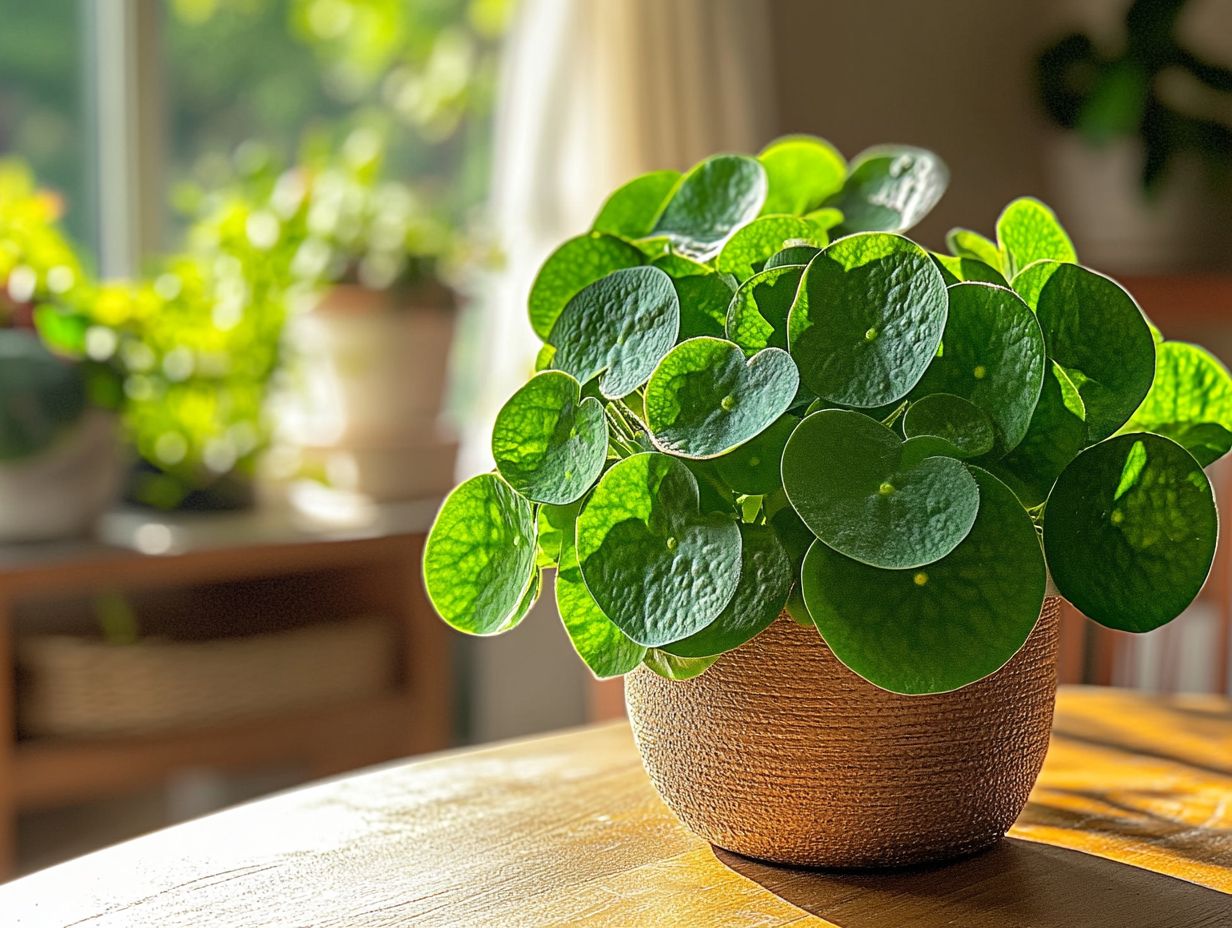
To ensure the optimal growth of your Pilea peperomioides, selecting the right potting mixture is essential. Aim for a well-draining blend rich in organic matter. With the right soil composition and occasional organic fertilizers, you can promote robust growth and enhance the overall health of this beloved indoor plant.
The ideal soil mix typically features a combination of peat moss, perlite, and pine bark. This blend provides essential aeration and nutrients your Pilea craves. Don t forget to choose a pot with drainage holes to prevent waterlogging; excess moisture can lead to root rot.
Opt for a pot size that allows the roots to spread comfortably while avoiding overcrowding. This balance will support steady growth. Incorporating aeration stones can further improve drainage and soil health, ensuring that the roots receive ample oxygen.
By regularly adding organic fertilizers, you ll replenish nutrients and contribute to the longevity and vibrant appearance of your Pilea. This plant can become the perfect green companion for your living space.
Pruning and Propagation Tips
Pruning and propagating your Pilea peperomioides can be rewarding. You can cultivate new baby plants through propagating new plants from offshoots while ensuring the vitality of the parent plant. By embracing effective pruning techniques and mastering leaf care, you can inspire healthy growth and manage the plant’s natural aerial roots.
With just a few simple strategies, you can achieve a bushier look that enhances the beauty of this unique houseplant. Start by evaluating the shape and size of your Pilea, pinpointing any leggy stems that need a snip.
Make it a priority to remove unhealthy or yellowing leaves. These can sap energy from the plant and hinder air circulation. Watch those aerial roots; you can gently tuck them back into the soil or let them thrive for added humidity.
Encouraging offsets through propagating new plants from offshoots not only produces delightful baby plants but also revitalizes the parent Pilea. This transformation will turn your indoor space into a flourishing garden.
Growth and Maintenance of Pilea
The growth and upkeep of your Pilea peperomioides depend on understanding its unique needs for flourishing. This includes providing optimal environmental conditions and consistent seasonal care.
By adopting effective watering strategies and adjusting to changing conditions throughout the year, you can guarantee the longevity and vitality of this cherished houseplant.
Common Issues and Solutions
Common issues affecting your Pilea peperomioides, such as pests and diseases like spider mites and mealybugs, can significantly impact leaf health and overall plant vitality. Understanding these challenges equips you with solutions. By identifying symptoms early and employing preventive measures, you can safeguard your Chinese money plant from detrimental effects.
Spider mites and mealybugs can sap energy from this delightful houseplant, resulting in discolored or dropping leaves. If you notice yellowing or wilting, it might signal overwatering or root rot. You can address this by checking the drainage and soil moisture levels.
Regularly inspecting the undersides of leaves and maintaining appropriate humidity levels can help deter these pests. Fostering a well-aerated environment also helps prevent fungal infections, ensuring your plant stays lush and vibrant.
By implementing simple care practices, you can create a thriving habitat for your Pilea and promote its health and vibrancy.
In summary, focusing on the soil, proper pruning, and being aware of common issues will ensure your Pilea thrives. With consistent care, your indoor garden will flourish!
Encouraging Growth and Health
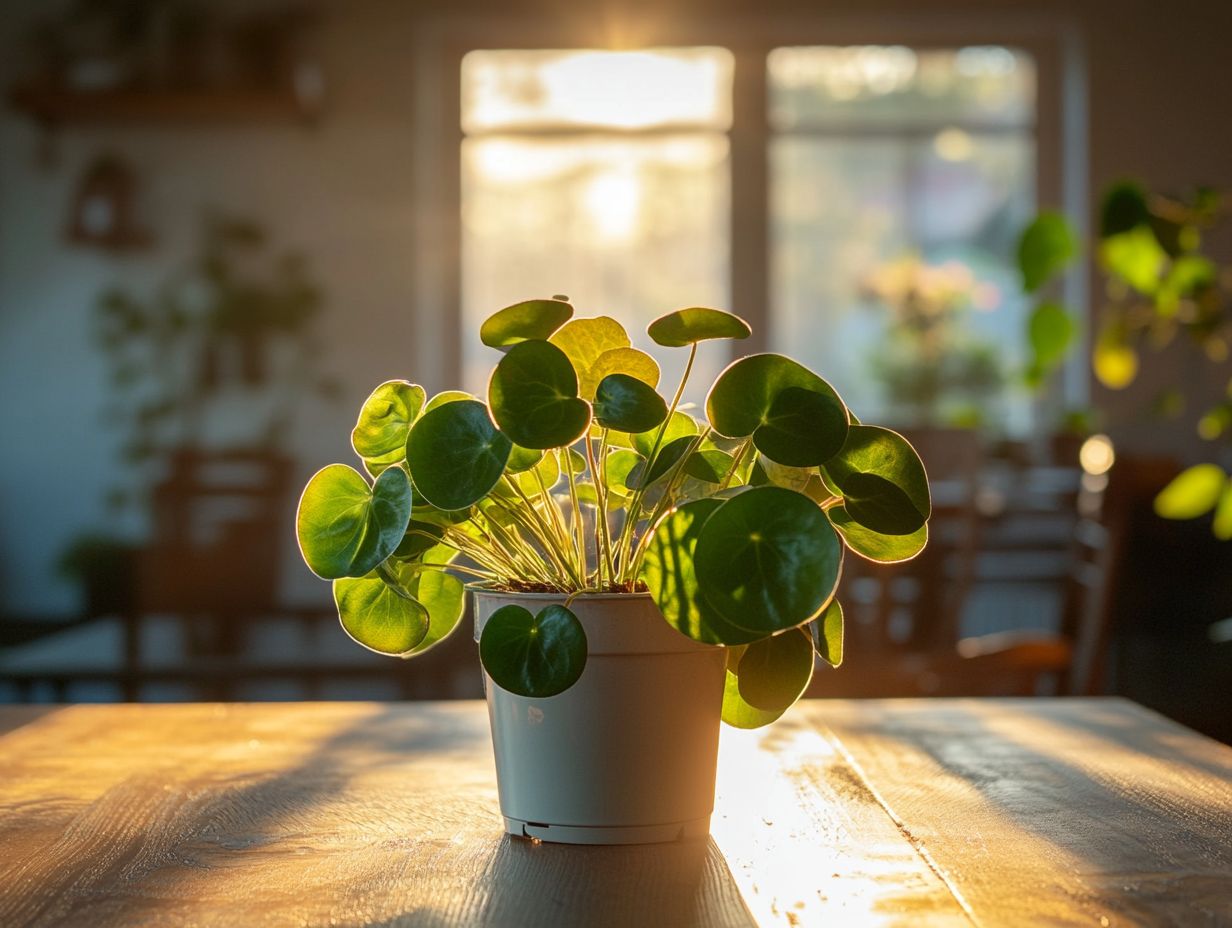
To foster the growth and vitality of your Pilea peperomioides, it s crucial to embrace a variety of plant care tips that enhance its environment. Focus on humidity levels and air circulation.
You can easily achieve a humidity-rich atmosphere by using a humidifier or placing a pebble tray filled with water beneath the pot. Your Pilea flourishes in conditions that reflect its tropical origins.
Equally important is ensuring good air circulation. Placing the plant in a well-ventilated area will help prevent problems like mold and pests, which can stop it from thriving.
When it comes to watering, allow the top inch of soil to dry out before the next session. Too much water can lead to root rot, while not enough water may stall its growth.
By paying attention to these key care elements, you can cultivate a robust and visually stunning Pilea that will be the envy of your indoor garden.
Decorating with Pilea
When you decorate with the Pilea peperomioides, you unlock a world of possibilities for elevating your indoor gardening aesthetic. This eye-catching plant looks fantastic in a decorative pot.
With its distinctive shape and glossy green leaves, the Chinese money plant can stand out as a captivating centerpiece or beautifully complement a variety of house plants throughout your living space.
Creative Display Ideas
Creative display ideas for your Pilea peperomioides can truly elevate your indoor gardening space. Showcase this beloved houseplant in unique and stylish ways. From vibrant decorative pots to innovative arrangements, the possibilities are endless.
Consider pairing your Pilea with complementary houseplants like ferns or succulents to craft a lush, multi-dimensional display that catches the eye. Choose decorative pots that reflect your personal style be it bohemian textures or sleek modern ceramics to add character and flair to any room.
Maximize your vertical space with shelves or wall-mounted planters. This not only elevates your plants but also creates depth in your decor. Tailor these ideas to fit your aesthetic while ensuring your Pilea receives ample sunlight and air circulation for a vibrant indoor garden.
Frequently Asked Questions
What is a Pilea plant and how do I care for it?
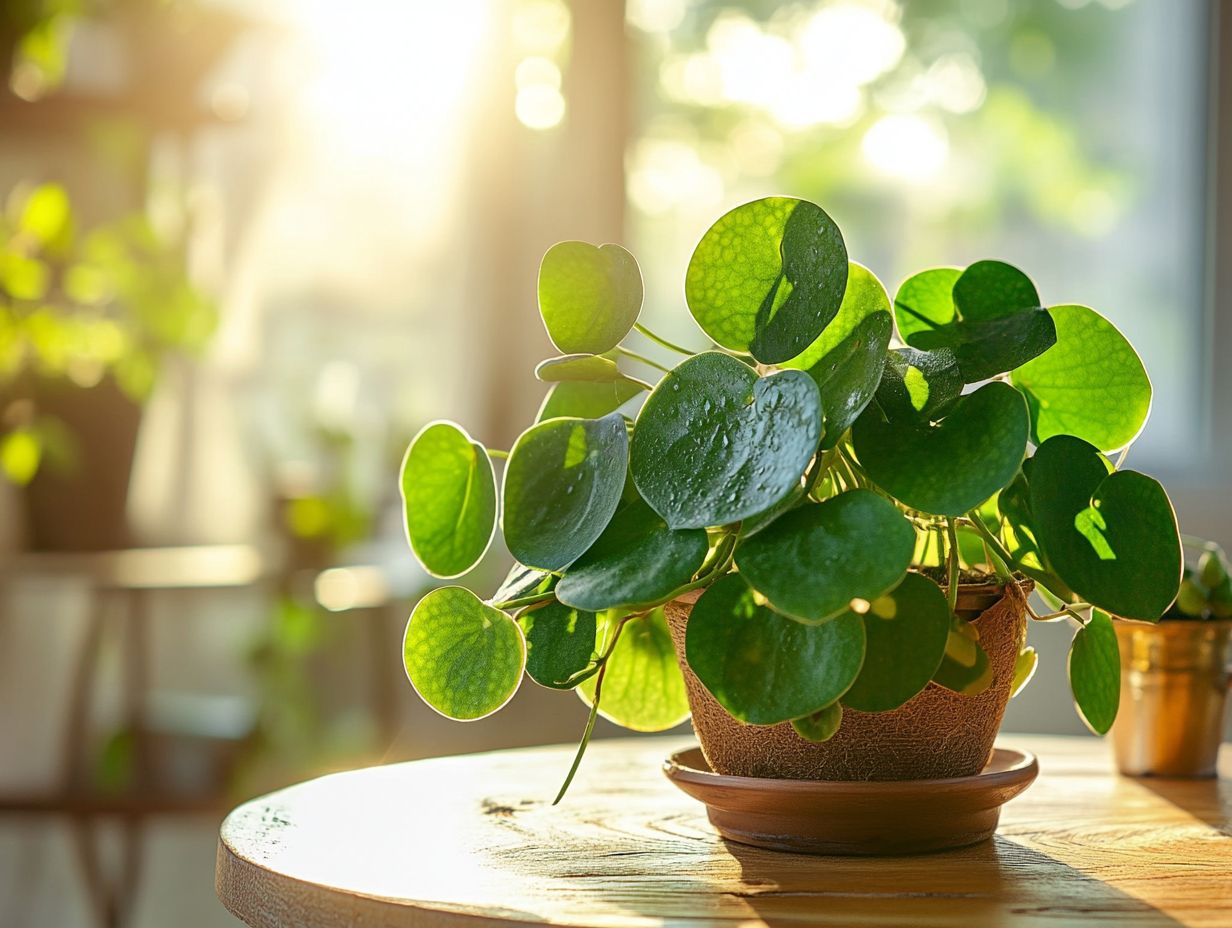
A Pilea, also known as the Chinese Money Plant, is a popular indoor plant with round, coin-shaped leaves. To care for it, make sure it receives indirect sunlight, water it regularly (but not too much), and fertilize it once a month with a balanced fertilizer.
How often should I water my Pilea plant?
Pilea plants prefer well-draining soil and only need to be watered when the top inch of soil is dry. This is typically once every 7-10 days but may vary depending on the environment and season.
Why are the leaves of my Pilea turning yellow and droopy?
Yellow and droopy leaves on a Pilea are often a sign of too much water or root rot. Check the moisture level of the soil before watering and consider repotting into a pot with better drainage holes.
Can I propagate my Pilea plant?
Yes, Pilea plants are easy to propagate! Simply take a stem cutting with a few leaves and place it in water or soil. In a few weeks, roots will develop, and a new plant will begin to grow through offset propagation or baby plants propagation, which refers to the little plants that grow off the main stem.
What is the best location for my Pilea plant?
Pilea plants thrive in bright indirect sunlight. Place them near a window that receives filtered light or in a well-lit room. Avoid direct sunlight, as this can cause their leaves to burn and affect leaf health.
How Fast Does a Pilea Plant Grow?
Pilea plants are fast growers! They can reach up to 12 inches in height in just one year.
With proper care and the right type of soil and humidity, they can grow even faster. You’ll be amazed as they produce new leaves regularly!

